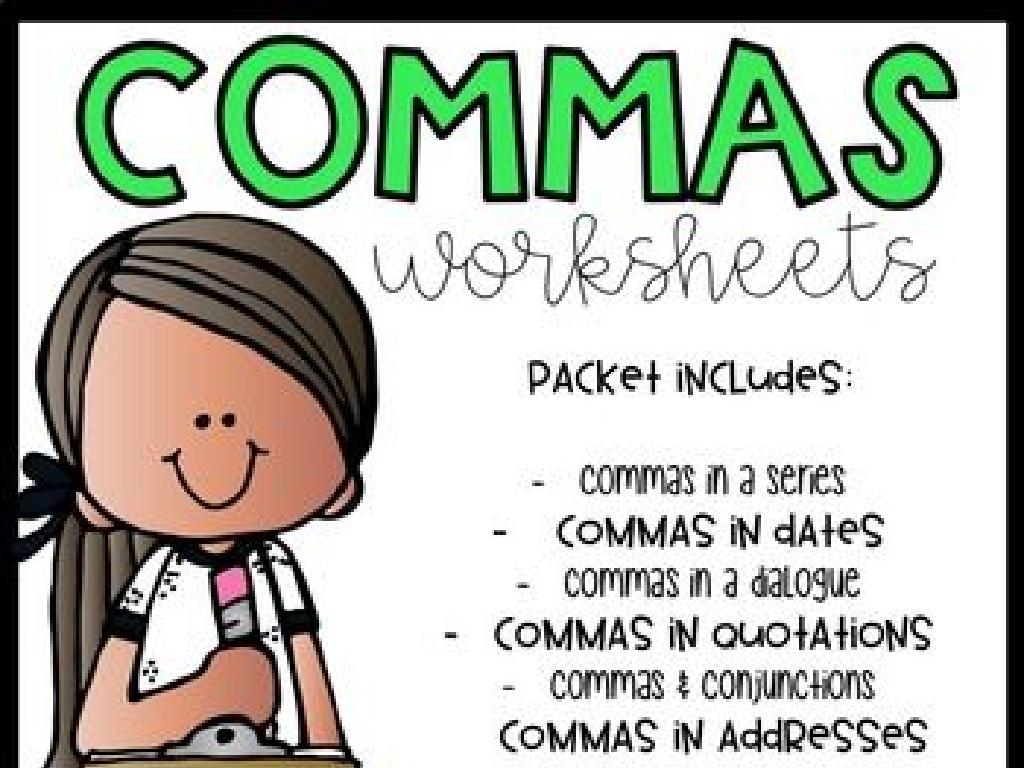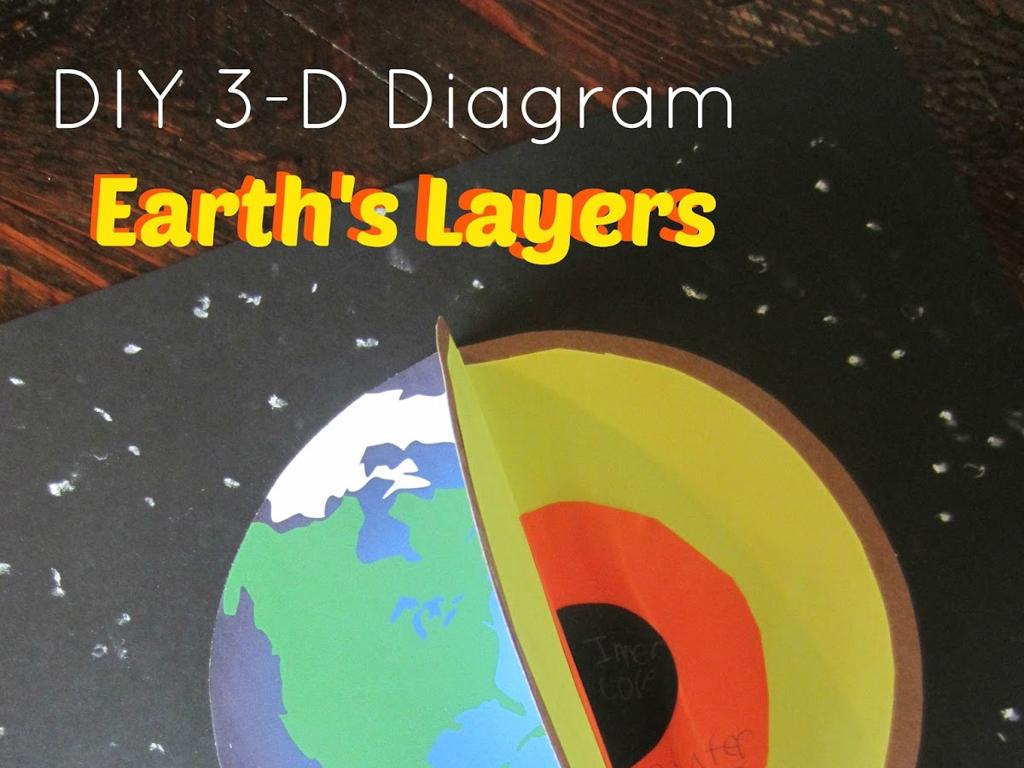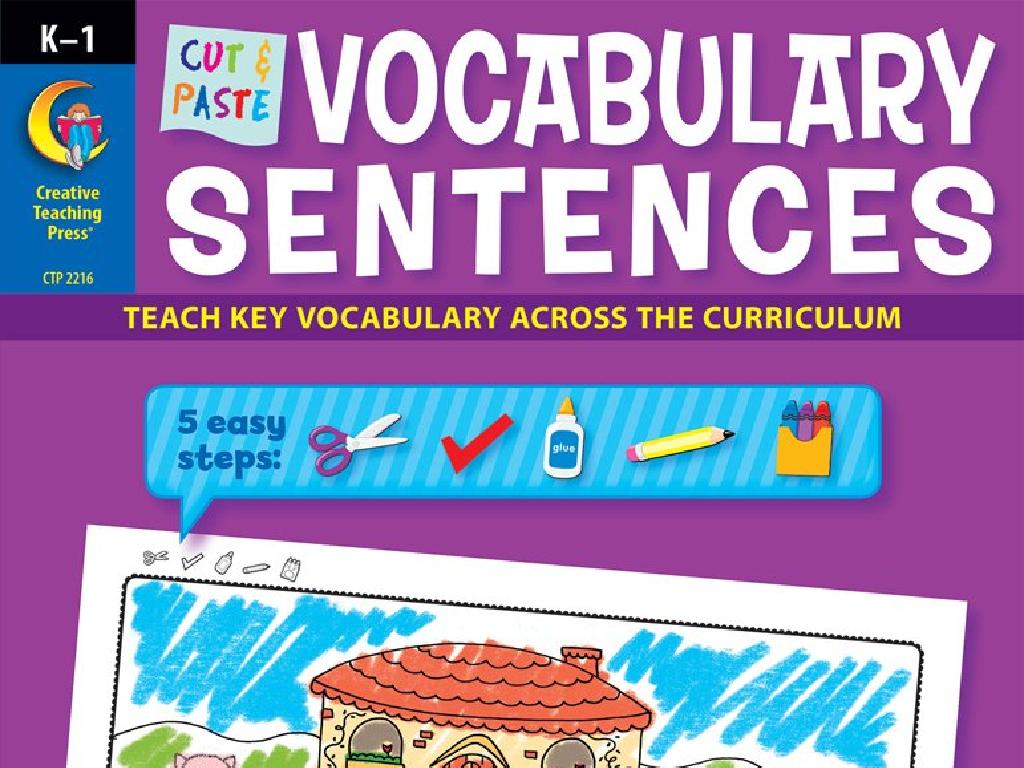Making Change
Subject: Math
Grade: Third grade
Topic: Money
Please LOG IN to download the presentation. Access is available to registered users only.
View More Content
Introduction to Money: Understanding Bills and Coins
– Learn about money forms
– Money comes as bills and coins
– Explore money denominations
– Bills: $1, $5, $10, $20; Coins: penny, nickel, dime, quarter
– Practice identifying money
– Recognize each bill and coin
– Counting money together
– Add up different money amounts
|
This slide introduces students to the concept of money, focusing on the physical forms of bills and coins. Start by showing real or play money to help students become familiar with what money looks like. Discuss the different denominations, starting with coins (penny, nickel, dime, quarter) and then moving on to bills ($1, $5, $10, $20). Engage the students in identifying each type of money and its value. Use interactive activities such as matching games or counting exercises to reinforce their ability to recognize and count money. The goal is to ensure that by the end of the lesson, students can confidently identify and add up various amounts of money, laying the foundation for making change in future lessons.
Understanding Making Change
– What does making change mean?
– Giving back the correct amount of money after a purchase
– The importance of making change
– Helps with math skills and money management
– Examples: Making change in real life
– Buying a toy for $3 with a $5 bill, how much do you get back?
– Practice with real coins and bills
– Use play money to simulate buying and returning change
|
Making change is a fundamental skill that involves counting back the correct amount of money to a customer after a purchase. It’s crucial for students to learn this to build their arithmetic skills and understand the value of money. Provide real-life scenarios, such as purchasing small items with larger bills and figuring out the change due. Encourage students to practice with play money to simulate real-world transactions. This will help them become more comfortable with the concept of money and improve their confidence in handling cash transactions. During the next class, we can have role-playing activities where students take turns being the cashier and the customer.
Counting Before Making Change
– Accurate money counting
– Count each coin and bill carefully.
– Practice with real or play money
– Hands-on practice makes it easier to understand.
– Use addition for total amounts
– Add up all the money to find the total before giving change.
– Importance of correct counting
– Ensuring the right amount of change is crucial.
|
This slide is aimed at teaching students the importance of counting money accurately before making change. Start by explaining the different coins and bills, their values, and how to count them individually. Then, move on to practicing with real or play money to provide a tactile learning experience. Show how to use addition to combine different amounts of money, reinforcing basic arithmetic skills. Emphasize the importance of correct counting to avoid mistakes when making change. As an activity, students can role-play transactions where they practice counting out the correct change. This will prepare them for real-life situations where they need to handle money responsibly.
Subtract to Find Change
– Use subtraction to find change
– Subtract price from amount given
– Example: $5.00 – $3.25 = ?
– If you give $5 for a $3.25 toy, how much change do you get?
– Practice with different amounts
– Try calculating change for items with prices like $2.00, $4.50, or $6.75.
|
This slide introduces the concept of making change using subtraction, which is a practical application of math in everyday life. Start by explaining that when you pay more than the cost of an item, you get money back, which is called change. Demonstrate how to subtract the item’s price from the amount given to find out how much change is due. Use the example provided to show the process step by step. Then, encourage students to practice with different amounts, ensuring they understand the concept. Provide guidance on how to handle transactions involving dollars and cents, and consider using real or play money for hands-on practice.
Making Change: Step by Step
– Start with the biggest bill
– If the change is $18, start with a $10 bill
– Move to smaller bills next
– Then give one $5 bill for a total of $15
– Use the largest coins
– Add two $1 coins to make $17
– Finish with smallest coins
– Finally, give one $1 bill to complete $18
|
When teaching students how to make change, start by explaining that it’s like counting backwards and using the largest currency first makes it easier. Demonstrate with real or play money. Show them how to count up from the purchase amount to the amount paid by the customer. Practice with different scenarios, starting with simple ones and gradually increasing complexity. Encourage students to think about the most efficient way to give change to avoid using too many coins or bills. This will help them develop their subtraction skills and number sense.
Let’s Practice Making Change!
– Interactive class example
– We’ll use a pretend shop scenario to learn.
– Calculate change for items
– If an item costs $3 and you pay with $5, how much change do you get?
– Everyone solves problems
– I’ll call on students to try making change.
– Discuss our answers together
– We’ll review the answers as a class and learn from each other.
|
This slide is for an interactive class activity focused on making change. Set up a mock shopping scenario where students can ‘buy’ items with play money. Provide various scenarios with different item costs and payment amounts, and ask the students to calculate the change they would receive. Encourage class participation by having students volunteer to solve the problems on the board. After each problem, discuss the correct answer and the steps taken to arrive at it. This will help reinforce the concept of making change and ensure that all students are engaged and understanding the process. Possible activities could include role-playing as cashier and customer, using real-life inspired items with price tags, and working in pairs or small groups to solve problems.
Making Change Game
– Engage with a change-making game
– Pair up: cashier and customer roles
– One student is the cashier, the other is the customer, then switch roles
– Use play money for practice
– Helps understand the concept of giving and receiving change
– Simulate real purchases
– Pretend to buy items and calculate the change required
|
This interactive game is designed to help students understand the concept of making change in a fun and practical way. By using play money, students can simulate real-life scenarios where they need to calculate the change given or received after a purchase. It’s important to guide them through the process of counting up from the purchase price to the amount paid by the customer. Encourage them to use mental math strategies and to check their work. Provide various scenarios with different purchase amounts and money paid to ensure a comprehensive understanding. This activity also promotes social interaction and role-playing, which can enhance learning through peer collaboration.
Class Activity: The Change-Making Challenge
– Divide into small groups
– Receive different money scenarios
– Scenarios like buying a toy, getting snacks, etc.
– Compete to calculate change quickly
– Use play money to make it fun and realistic
– Discuss strategies and results
– Share methods used and learn from each other
|
This activity is designed to help students understand the concept of making change through a fun and interactive group challenge. By dividing the class into small groups, students can work collaboratively to solve real-world money scenarios. Provide each group with various scenarios where they need to calculate the correct change, such as purchasing items with a certain amount of money. Encourage them to use play money to enhance the learning experience. The competitive element will engage them to think and calculate quickly. After the activity, lead a discussion where groups can discuss the strategies they used and what they learned. This will help reinforce their understanding and allow them to learn different approaches from their peers. Possible scenarios include buying a toy for $3.50 with $5, getting snacks for $2.25 with $10, or purchasing a book for $7.99 with $20. The teacher should circulate to ensure understanding and provide guidance as needed.
Review: The Skill of Making Change
– Recap on making change
– We learned how to give back the correct amount of money after a purchase.
– Questions about change-making
– Value of change-making skills
– Understanding money helps with buying things and saving.
– Applying skills in daily life
– Imagine you’re buying a toy; knowing change helps you check if you got the right amount back.
|
Begin the slide by summarizing the steps of making change, ensuring students recall how to subtract the price of an item from the amount given to determine the change due. Open the floor for questions, allowing students to clarify any doubts. Emphasize the importance of making change in everyday life, such as when shopping or managing allowance. Relate the skill to real-life scenarios they might encounter, like purchasing snacks or small toys, to illustrate how it helps avoid mistakes and ensures fair transactions. Encourage them to practice by playing pretend store or using interactive games that simulate shopping experiences.
Homework: Practice Making Change
– Complete the money worksheet
– Solve scenarios on how to give change
– Practice change-making with family
– Use real coins or pretend money at home
– Review your skills for a quiz
– Go over the worksheet and practice problems
– Bring any questions to class
|
This homework assignment is designed to reinforce the day’s lesson on making change. Distribute a worksheet with various money scenarios that require students to calculate the correct change. Encourage students to practice with their family members at home, using real or pretend money to simulate real-life transactions. Remind them that there will be a quiz during the next class to assess their understanding of making change. This practical exercise will help solidify their grasp of the concept. Be available to answer any questions students may have in the following class. Provide additional examples or practice problems if necessary to ensure all students are prepared for the quiz.






